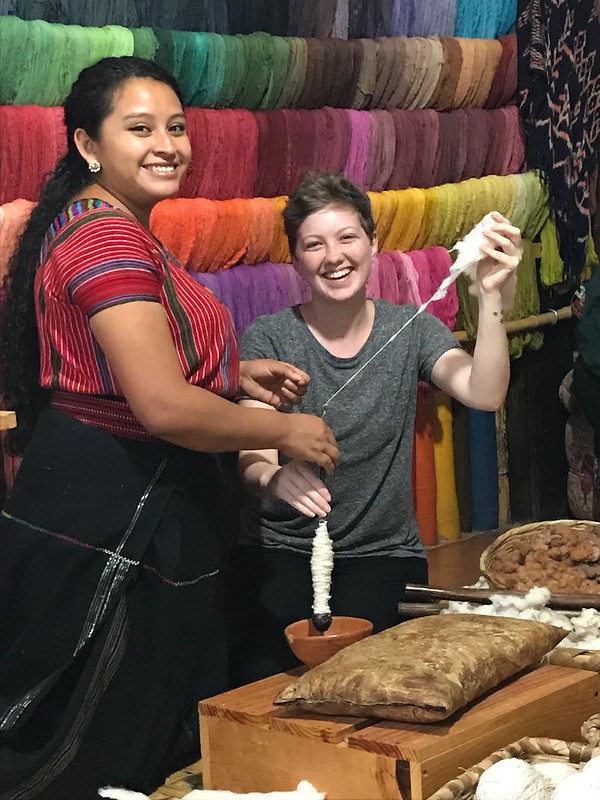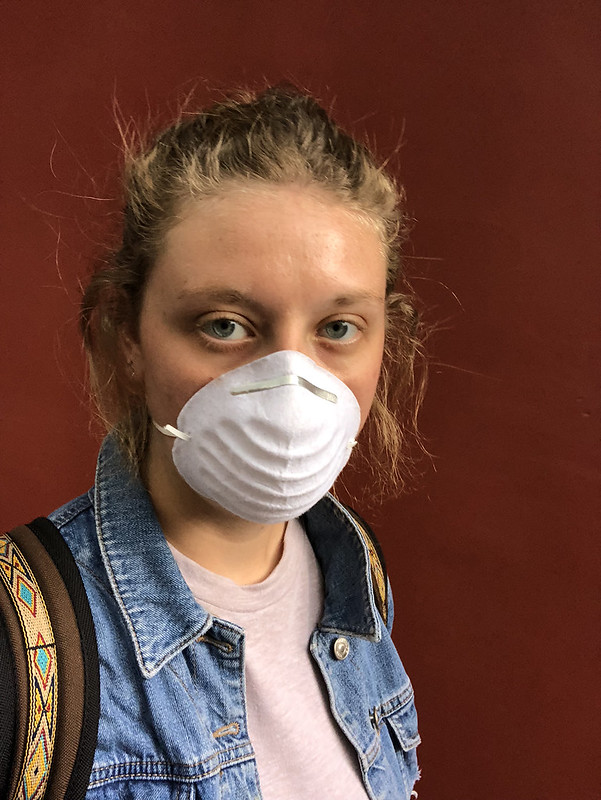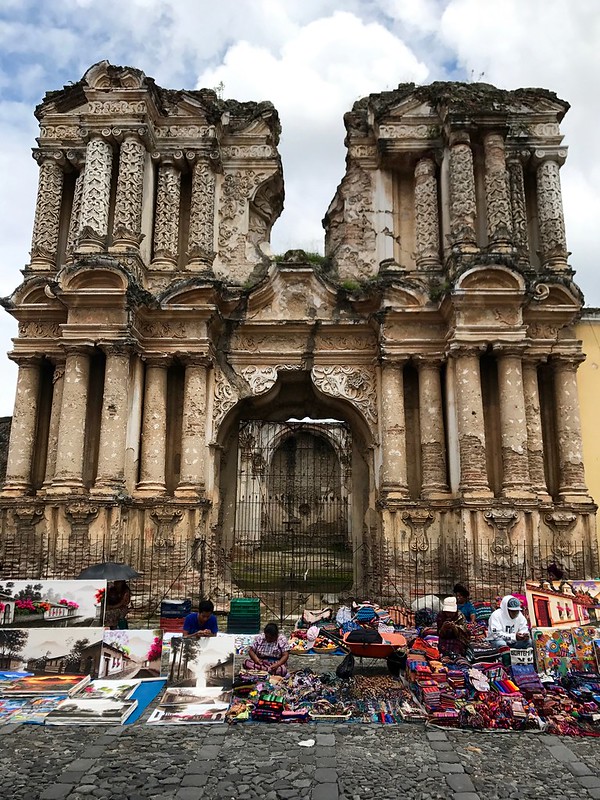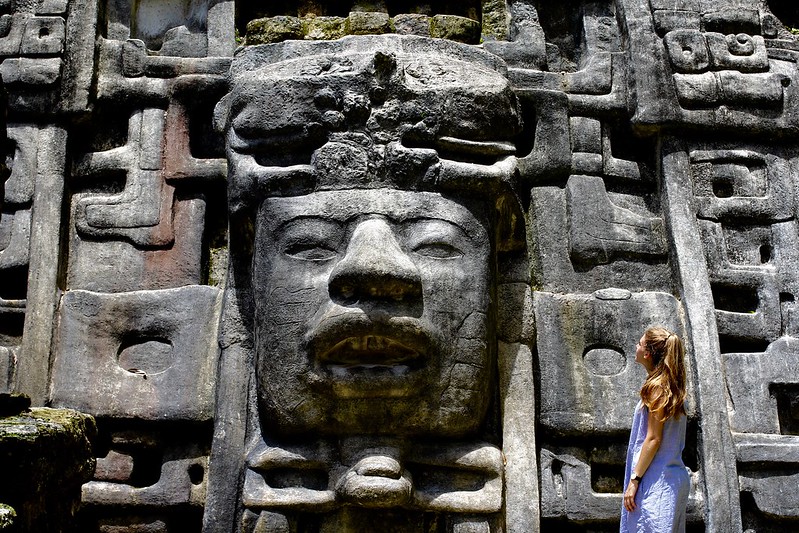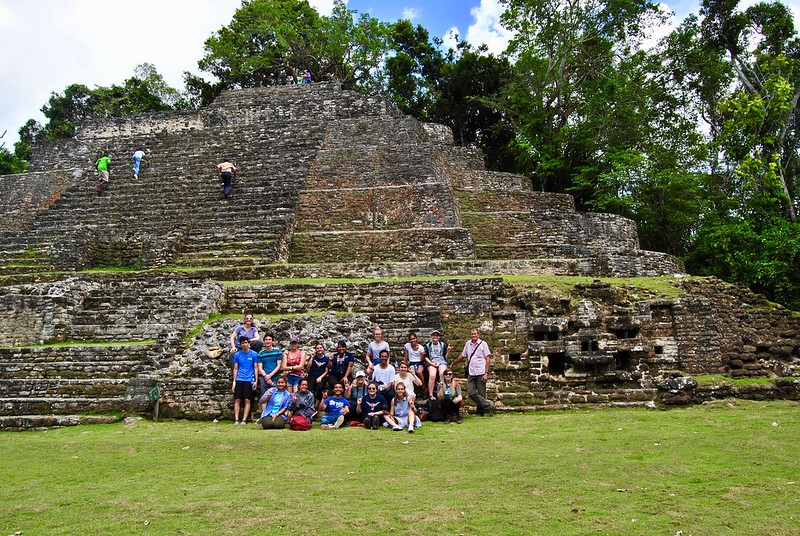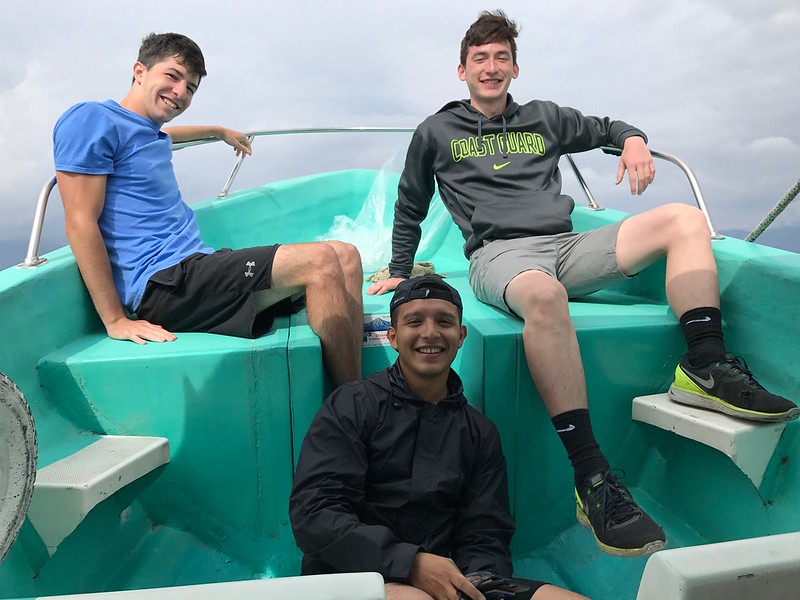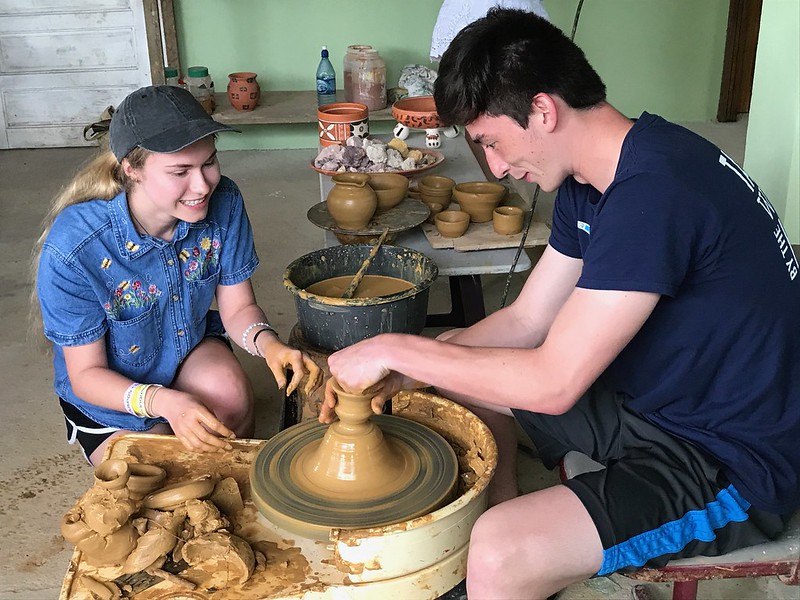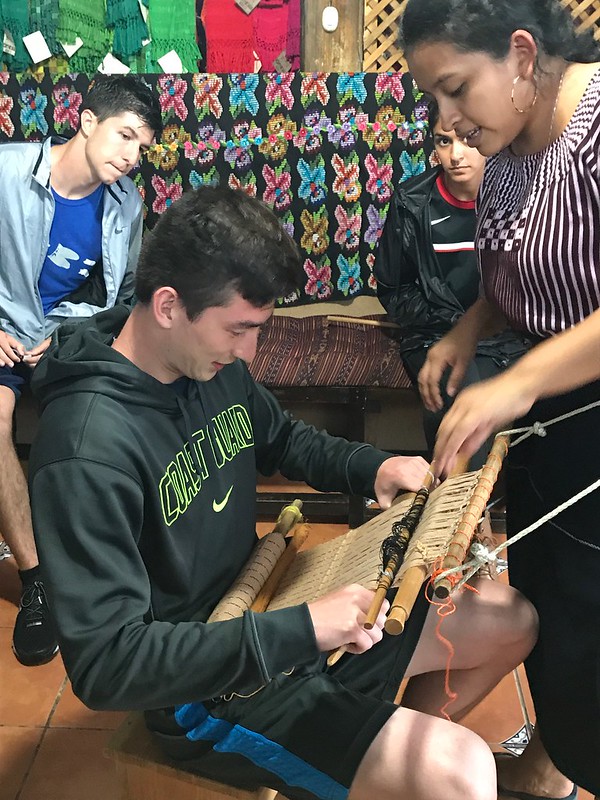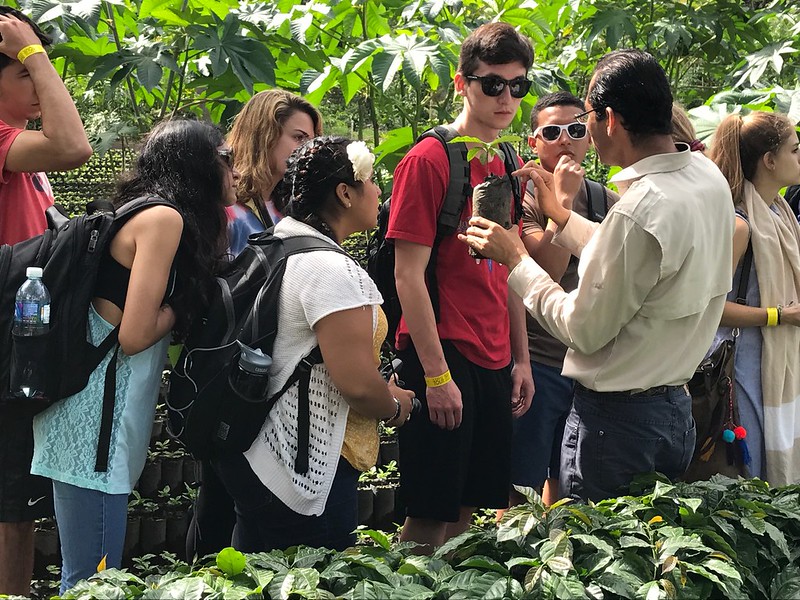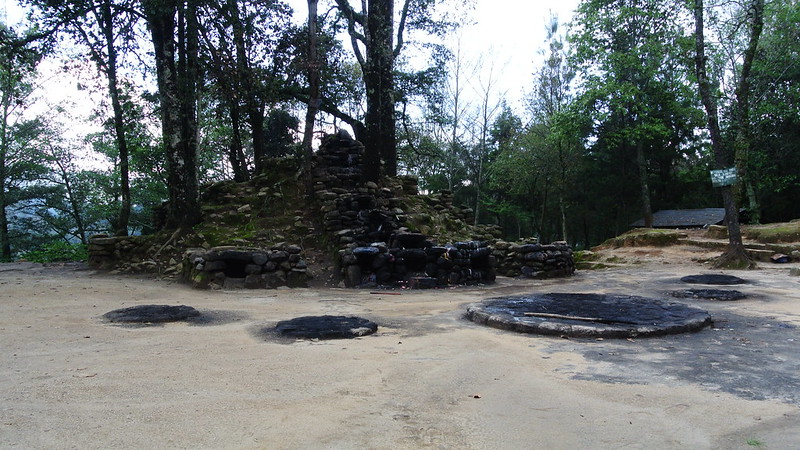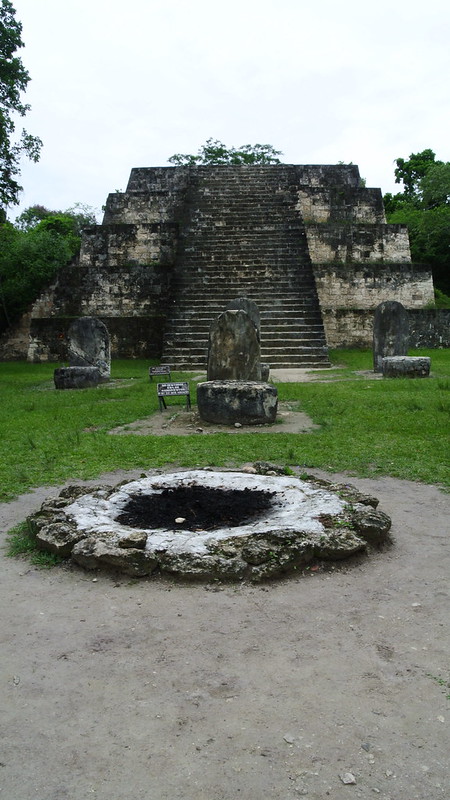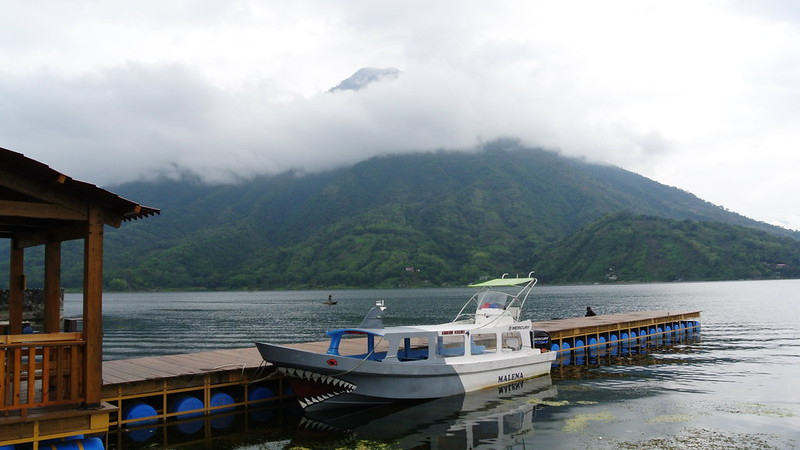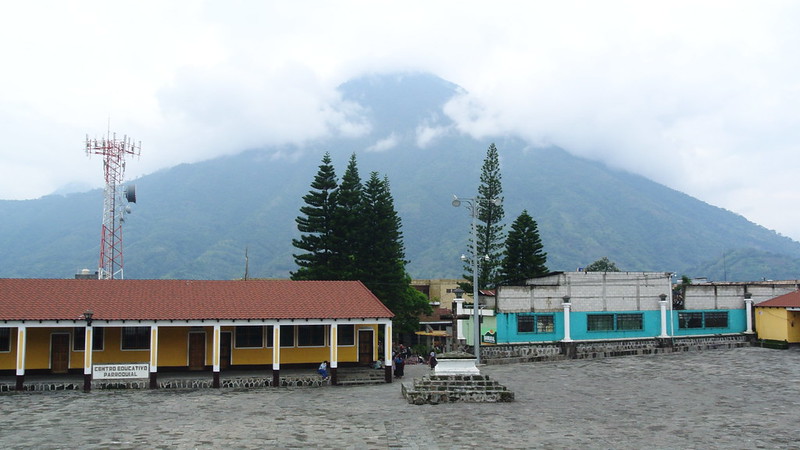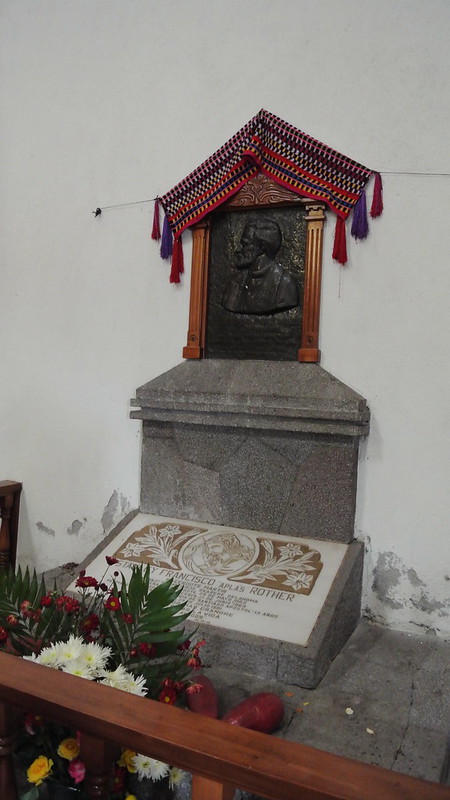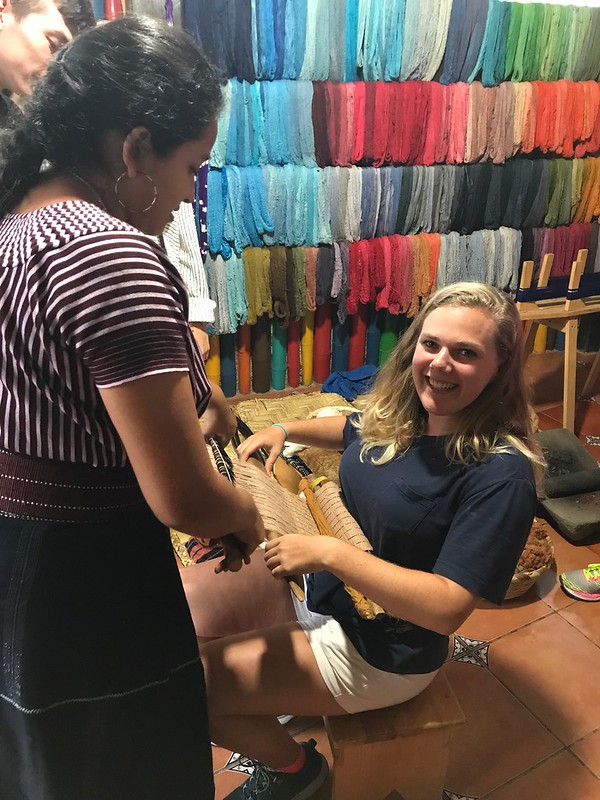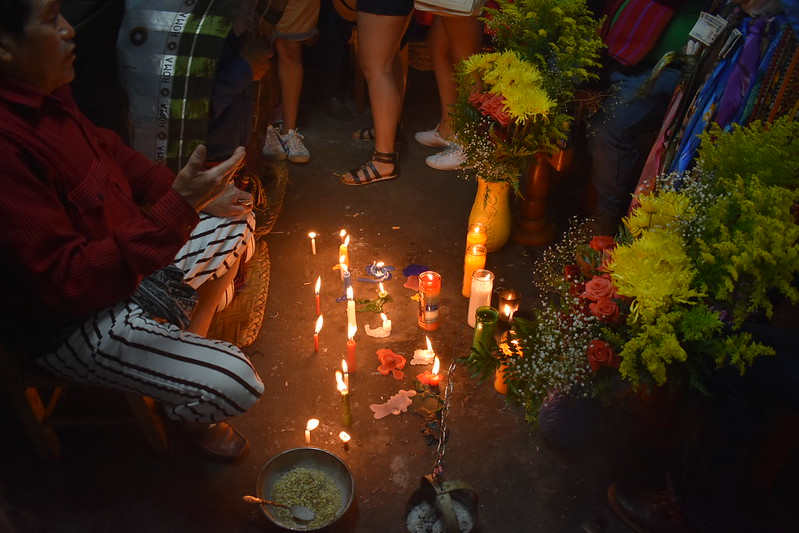Over the weekend we had the pleasure of visiting a weaving cooperative in San Juan La Laguna called Casa Flor Ixcaco. A member of the co-op named Delfina demonstrated the entire weaving process for us. The women not only weave the products sold at the store but are involved in every step leading up to the weaving. They grow the cotton and plants used to dye it, hand spin it into thread, dye it a variety of colors by hand, and then finally weave it into fabric using the traditional Maya backstrap loom.
Delfina also explained the meaning of the traje, or traditional clothing, of San Juan La Laguna. The red huipil (blouse) represents the energy of the Maya and the dark blue or black of the faja (belt) and corte (skirt) represent the energy of Lake Atitlan. During the whole experience I was struck by how connected Delfina and the other weavers were to their clothing. They are involved from the moment the cotton is planted until the garment is complete. Every step is carried out with love, patience, and incredible skill and the clothes are worn with pride.
In contrast to these women, I know nothing about the clothes I wear except what they look like and where I bought them. I decided to take a closer look at one of my shirts, pictured above. It is a black and white striped t shirt I purchased at H&M shortly before coming on this trip.
The tag states it is 95% cotton and 5% spandex and was made in Bangladesh. H&M lists most of their suppliers of garments, fabric, and yarn on their website but, I am unable to tell which specific supplier produced my shirt. I also can’t find information on the chemicals involved in dyeing or treating the yarn and/or fabric. In H&M’s 2017 Sustainability Report they state the company often does not have direct relationships with the suppliers of fabric and yarn, so it’s possible even they don’t know how the thread is dyed. The tags on Casa Flor Ixcaco products however list the dyes used, the weaver who created it, and the time it took to make.
During my time in Guatemala, particularly at Casa Flor Ixcaco, I have come to better understand clothing as both a product and symbol of identity. Before traveling here I rarely thought about the entire process of creating a piece of clothing.
It is so easy to buy a t-shirt without knowing where it came from, how it got to the store, and the materials and labor used to make it. Clothing is such an integral part of our lives (we do wear it everyday!) so I’m glad I am more conscious about how it affects us and our world at large.


